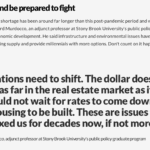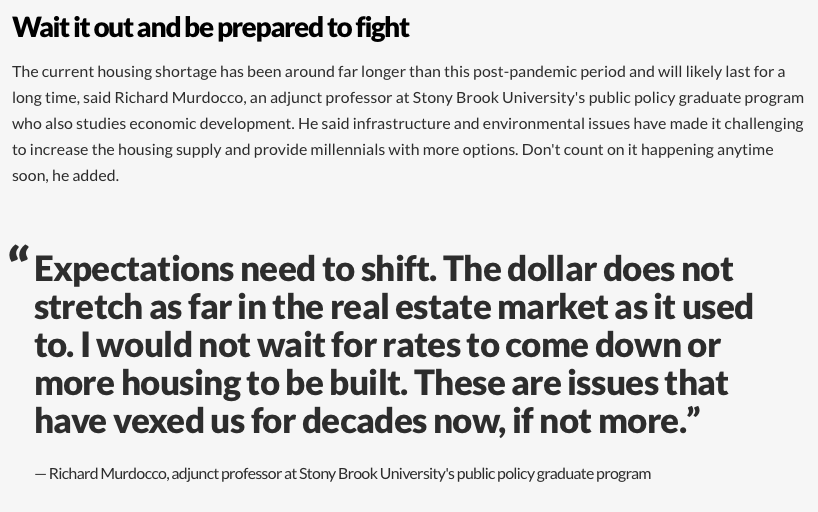The following was written for the Long Island Press on 2/29/16. You can read the original here.
From the tap, a glass of Long Island’s water is crisp, cool and refreshing—descriptions that any soft drink or craft-beer company would love to have on their label.
Geologically, our region is blessed with ample amounts of fresh, potable water. It is of such high quality that Dr. Lee Koppelman, Long Island’s master planner who heads the Center for Regional Policy Studies at Stony Brook University, often joked in class that in order to close Suffolk’s budget gaps, we should just bottle and sell the county’s tap water at a premium price.
But today our supply is seriously threatened by overdevelopment, industrial malfeasance and political indifference.
Despite the importance of protecting our drinking water, the public policies for protecting this vital resource are too often skewed by the hunger to build.
Last week Gov. Andrew Cuomo came to Stony Brook University to announce a major initiative to address New York’s water woes. His proposal would allocate $6 million for a new comprehensive groundwater study for Long Island to further examine levels of saltwater intrusion and chemical contamination–essentially the byproducts of over-pumping our aquifer and not having enough sewers.
In the decades since the last true assessment of our regional water quality was conducted, development has continued with scant regard for the looming environmental crisis at hand.
When it comes to water protection, Long Island’s policymakers have known what do since the first federally-funded study explored the issue in-depth in July of 1978. Conducted by the Long Island Regional Planning Board, the report determined the linkage between land use and water quality, an important connection that helped shape zoning laws across Long Island. In the years following that groundbreaking document, Suffolk County took the findings seriously and worked with New York State to protect the Central Pine Barrens and other environmentally sensitive areas from development, while Nassau County just shrugged.
How best to protect this essential resource is a long running debate that pits environmentalists, developers, politicians, pundits and other familiar faces. They have conferences, hold panel discussions, pen op-eds and do other things to prime the pump. Currently, the push is on to Build! Build! Build!, but we must prioritize protecting our drinking water as much as we prize retaining millennials and developing rental housing. The simple truth is that the aquifer holds the key to our future.
First, we must understand the current condition of our drinking water and then we must preserve its pristine purity in perpetuity. To achieve this, we must aggressively preserve more open space, cut down on contamination from pesticides and nitrogen-rich fertilizers—by-products from East End farming—and ensure that our region’s sewage treatment plants, from local community systems to the large municipal plants, are doing their job.
But one big obstacle that must be overcome is Nassau’s balkanized water providers. Their political fragmentation does a disservice to all Long Islanders. As a recent Newsday editorial deplored, the county has a patchwork quilt of “municipal districts, commissioner-run special districts, private corporations and public authorities.” Until these fiefdoms are united, no worthwhile planning effort can succeed.
Everybody knows what we need to do to protect our water. But who has the political will to do it? It’s taken dead fish carcasses piling up on the shoreline to dramatize the severity of our regional crisis, leading Suffolk County Executive Steve Bellone to declare that nitrogen is “public water enemy number one.”
After Superstorm Sandy, the vulnerability of Nassau County’s fragile wastewater infrastructure was grotesquely revealed by the failure of the Bay Park wastewater treatment plant. Tons of untreated sewage were dumped into the surrounding waterways. The crap even ended up in people’s homes. Like the fish kills on the East End, Bay Park’s dysfunction was a public shame.
So, Cuomo deserves praise for his proposal to address the water worries of Nassau and Suffolk. But let’s hold off on the celebration until these actions bear fruit. Addressing the Grumman Plume in the Bethpage area is an excellent start, but more steps should be taken. The state should also work with Suffolk County to ensure that Article 6, which determines appropriate developmental density in environmentally critical areas, is enforced by local towns, as well as further monitoring of any sewer plant as set forth by the State Pollutant Discharge Elimination System under New York’s Environmental Conservation Law to make sure that the discharge standards are met.
As pressure mounts to develop Long Island at higher and higher densities with the proliferation of more sewer facilities in the endless quest for supposed economic gains, the vulnerability of Long Island’s aquifers should not be forgotten.
New York State Assemb. Steve Englebright (D-East Setauket), a scientist first and longstanding elected official second, has been a champion of Long Island’s water issues since he first took office in Suffolk County in 1983. He was sitting on the dais with Gov. Cuomo at the governor’s recent announcement at Stony Brook. Since joining the Assembly in 1992, Englebright has been instrumental in securing open space preservation policies that still resonate today.
He called Cuomo’s new initiative “a positive first step in front of increasingly bad news on public water supplies both elsewhere in the country, and here at home…To have the chief executive take the time to come to Long Island and devote resources to this issue is a big deal.” Historically, water protection policies have not become weaker since the heyday of the Long Island 208 Study, Englebright said, but they follow a “pattern of involvement that goes back decades, and has accelerated as our understanding of the dimensions of the problems our aquifer faces.”
Suffolk County’s efforts have been stronger than its neighbor to the west, Englebright noted, “but there has been no lack of will on the part of Nassau.” He cited various resident-led efforts for water protection in Nassau, but said that the heavily developed County has “narrow options from a policy and development perspective.”
When asked whether the governor’s initiative will differ from past attempts that sought to balance economic growth and water protection, Englebright replied, “There will be a tendency for that perspective to be repeated… It will fall to advocates and elected officials (myself included) to say that sewering has its limits, and it is by no means a panacea.”
He says he favors recognizing the natural limitations of living on an Island.
“This particular Island isn’t the same as Manhattan, and wastewater isn’t the only measure of ensuring sustainable quality-of-life,”Englebright said. “There are many sources of contamination that come from development. Saltwater intrusion and pet waste are two examples, with the latter being directly proportional to the number of households.”
Today, Englebright notes that when it comes to environmental policy in the region, there is “a certain amount of memory loss from generation to generation in relation to Long Island’s natural limitations.”
It is with a cautious optimism that Long Islanders should embrace Gov. Cuomo’s initiative. At this point, any strategy to stop the decline in quality of our drinking water should be cheered, but it’s important for all involved – elected officials, policymakers, vested interests and the public – to keep these efforts grounded in reality.
What is the point of planning for Long Island’s future if the end result is just another study that will sit on a shelf? Worse, while the answers gather dust, the next generation of Long Islanders will be drinking dirty water – all because of our collective inability to do the right thing. We owe them a better future than that.
Rich Murdocco writes about Long Island’s land use and real estate development issues. He received his Master’s in Public Policy at Stony Brook University, where he studied regional planning under Dr. Lee Koppelman, Long Island’s veteran master planner. Murdocco is a regular contributor to the Long Island Press. More of his views can be found on www.TheFoggiestIdea.org or follow him on Twitter @TheFoggiestIdea.











Another great article, Rich. I hope it is widely shared, all Long Islanders should read it!